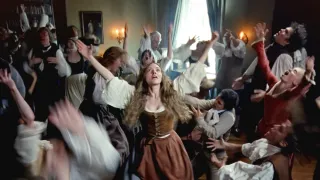May 19, 2017
Toronto CF Kevin Pillar Apologizes for Using Anti-Gay Slur
Paul Newberry READ TIME: 3 MIN.
Toronto Blue Jays center fielder Kevin Pillar apologized Thursday for directing an anti-gay slur at a Braves pitcher, which could lead to disciplinary action from Major League Baseball.
Pillar was angry at Jason Motte for allegedly quick-pitching him to get a strikeout that ended the seventh inning in Atlanta's 8-4 victory Wednesday night.
Replays appeared to show Pillar using the slur as he yelled toward the mound, and the player issued a statement acknowledging his wrongdoing.
"I used inappropriate language towards Braves pitcher Jason Motte," Pillar said. "By doing so I had just extended the use of a word that has no place in baseball, in sports or anywhere in society today. I'm completely and utterly embarrassed and feel horrible to have put the fans, my teammates and the Blue Jays organization in this position."
Commissioner Rob Manfred says MLB is investigating.
"We're in the process of trying to gather the facts as a prelude to determine whether and what discipline's appropriate," he told The Associated Press.
The incident occurred during the Blue Jays' third straight loss to the Braves. With his team trailing 8-3, Pillar struck out swinging to end a 1-2-3 seventh. He yelled toward the mound, prompting Motte to throw up his arms as if he didn't know what the problem was.
Atlanta catcher Kurt Suzuki and home plate umpire Brian O'Nora stepped in to diffuse the tension. Pillar headed toward the outfield and the Braves left the field.
Afterward, Pillar conceded to reporters that he was frustrated by his team's struggles, though he didn't mention what was said.
"It just stems from a little frustration in myself, just the way this series has been going," he said. "It was immature, stupid. It was uncalled for. It's part of the game. I'm a competitive guy."
Pillar was much more contrite in his statement Thursday.
"I have apologized personally to Jason Motte, but also need to apologize to the Braves organization and their fans, and most importantly, to the LGBTQ community for the lack of respect I displayed last night," he said. "This is not who I am and will use this as an opportunity to better myself."
Blue Jays general manager Ross Atkins flew to Atlanta to address the issue before the finale of the interleague series.
The team issued a statement saying it was "extremely disappointed" in Pillar's comments.
"In no way is this kind of behavior accepted or tolerated, nor is it a reflection of the type of inclusive organization we strive to be," the statement said. "We would like to extend our apologies to all fans, Major League Baseball and especially the LGBTQ community."
The team went on to say: "We know Kevin to be a respectful, high-character individual who we hope will learn from this situation and continue to positively contribute and live up to our values on and off the field."
There was no indication as to whether the Blue Jays intended to discipline Pillar. In 2012, former Toronto shortstop Yunel Escobar received a three-game suspension from the team after he played a game with an anti-gay slur written in Spanish on his eye-black stickers.
Pillar's slur came during a heated game in which Braves star Freddie Freeman was struck on the left wrist by a pitch, resulting in a fracture that will sideline one of the game's best hitters for approximately 10 weeks.
In the eighth inning, both teams charged onto the field after Toronto's Jose Bautista homered off Eric O'Flaherty, stared down the Atlanta reliever and flipped his bat high in the air. Jace Peterson shouted something at Bautista as he rounded first base, and Suzuki exchanged words with the Blue Jays slugger after he touched home plate.
No punches were thrown, but O'Flaherty issued a harsh rebuke to Bautista after the game.
"That's something making the game tough to watch," the pitcher said, referring to previous home run celebrations by the Toronto slugger. "It's turned into look-at-me stuff. He hit a home run with (the Braves holding) a five-run lead and throws the bat around. I'm just tired of it. I've seen it from him enough."
O'Flaherty then brought up a punch that Bautista took just over a year ago during a scuffle with Texas second baseman Rougned Odor.
"I'm surprised he's ready to fight after last year," O'Flaherty said with a disdainful chuckle.






